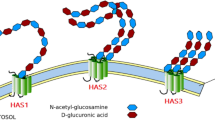Abstract
Hirudin, a blood anticoagulant protein from leeches, and β-glucuronidase were produced in Brassica carinata Braun (Ethiopian mustard) seeds using oleosin as a carrier. Cotyledonary petioles were infected with Agrobacterium strains containing oleosin-glucuronidase (pCGNOBPGUS-A) or oleosin-hirudin (pCGN-OBHIRT) constructs. Polymerase chain reaction and neomycin phosphotransferase II enzyme assays confirmed the presence of the fusion genes in plants regenerating under selection. The fusion polypeptides were correctly expressed and targeted to the oil-bodies of the seeds with high fidelity (ca. 90%). Recombinant protein was purified from all other cellular protein by a simple flotation process and cleaved from oil-bodies using the endoprotease, Factor Xa. Hirudin activity was measured using a colorimetric thrombin inhibition assay and an activity in the range of 0.2–0.4 antithrombin units per milligram of oil-body protein was detected. B. carinata offers an attractive alternative for the production of recombinant proteins using oleosin technology.
Similar content being viewed by others
Author information
Authors and Affiliations
Additional information
Received: 20 March 1997 / Revision received: 5 June 1997 / Accepted: 30 July 1997
Rights and permissions
About this article
Cite this article
Chaudhary, S., Parmenter, D. & Moloney, M. Transgenic Brassica carinata as a vehicle for the production of recombinant proteins in seeds. Plant Cell Reports 17, 195–200 (1998). https://doi.org/10.1007/s002990050377
Issue Date:
DOI: https://doi.org/10.1007/s002990050377




